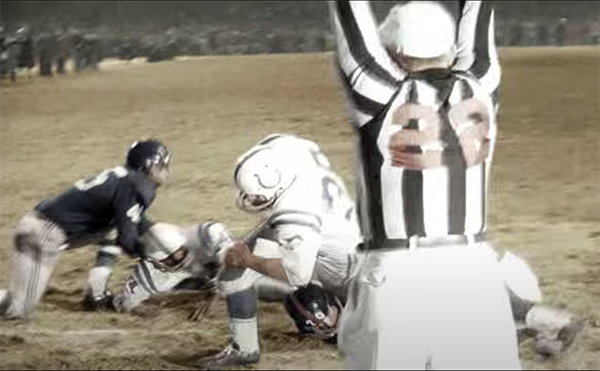
Baltimore’s Alan Ameche plunges over the goal line for the winning touchdown!(courtesy YouTube/NFL Films)
On the field? Maybe. In its impact on pro football and sports broadcasting? Absolutely!
By Mark Wainwright
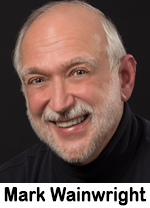 It was one of those indelible moments in sports history: The 1958 NFL Championship, played on December 28, 1958 at Yankee Stadium in New York. The Baltimore Colts defeated the New York Giants 23-17 in sudden death overtime. 65 years later, the events of that Sunday afternoon still resonate throughout pro sports and sports media.
It was one of those indelible moments in sports history: The 1958 NFL Championship, played on December 28, 1958 at Yankee Stadium in New York. The Baltimore Colts defeated the New York Giants 23-17 in sudden death overtime. 65 years later, the events of that Sunday afternoon still resonate throughout pro sports and sports media.
In 1958, the National Football League was far from the huge phenomenon we see today. Americans generally had much more interest in baseball, and during the Fall, college football captured the attention of sports fans on Saturday afternoons. The annual Army/Navy and Harvard/Yale clashes were national news stories, and fans followed the exploits of powerhouses like Notre Dame and Michigan. For most fans, pro football was an afterthought. Even in cities with pro franchises, the NFL clubs often played runner-up to the local baseball teams.
Baltimore and New York were two exceptions. The Colts were upstarts — Baltimore didn’t get an NFL team until 1953 — and the city quickly fell in love with the Colts; on game days, Baltimore’s Memorial Stadium was described as “the world’s largest outdoor insane asylum.” Meanwhile, the Giants had been part of the NFL since 1925, and they were considered the league’s most glamorous team, located in the world’s media capital. Two very different teams, both with passionate fan bases, playing a nationally-televised title game in New York City… indeed, America was destined to notice pro football that day.
Seventeen Pro Football Hall of Fame inductees were in the stadium that afternoon, along with a Heisman Trophy winner (Baltimore running back Alan Ameche). The Colts were led by quarterback Johnny Unitas and defensive end Gino Marchetti. The New York offense revolved around halfback Frank Gifford, while linebacker Sam Huff anchored the defense.
There were all-stars in the broadcast booths, as well. NBC’s national telecast was assigned to Chris Schenkel and Chuck Thompson; both of these gentlemen are now legends of their industry. Joe Bolan and Bill McColgan called the game for NBC’s national radio feed, while Les Keiter did the play-by-play for WCBS Radio in New York. And Bob Wolff did the radio call for Baltimore’s WBAL. Wolff was assisted by an eager teenager who worked as his spotter… a young man named Maury Povich (yes, that guy).
The first half, frankly, wasn’t anywhere near “greatest game” territory. While both defenses played fairly well, the offenses looked sloppy and disorganized, and the two teams combined for six turnovers in the first thirty minutes. The Giants managed only a Pat Summerall field goal, while the Colts — almost in spite of themselves — took a 14-3 lead into halftime. It could have easily been 17-3, but Sam Huff blocked a Baltimore field goal attempt.
So, what was the halftime entertainment? Over the years, Super Bowl halftimes have featured performers like Lady Gaga and Michael Jackson. What 1950’s superstars would perform in the “super bowl” of 1958? Elvis Presley? Brenda Lee, maybe? Nope. It was the Baltimore Colts Marching Band, with their prancing majorettes looking quite fetching in their red leotards and reindeer antlers…
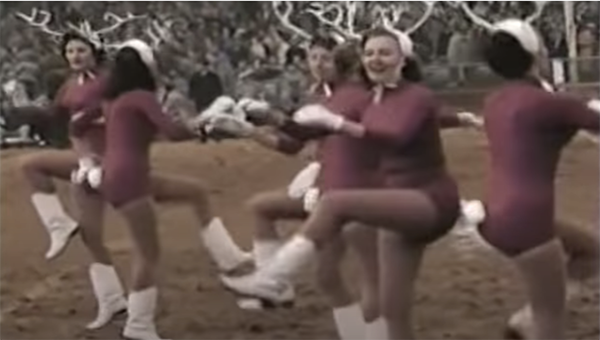
The Baltimore Colts Marching Band majorettes, in “reindeer” mode! (courtesy YouTube/NFL Films)
Baltimore’s offensive woes continued into the second half. Early on, the Colts drove the ball to New York’s 1-yard line, but Alan Ameche was stopped for no gain on third down, then Ameche was tackled for a loss when he attempted to run wide on fourth down. In an interview decades later, Baltimore’s Lenny Moore revealed that Ameche botched the play; it was supposed to be an option pass, but Ameche didn’t hear Johnny Unitas’ signals correctly, and he ran instead of throwing a short pass to a wide open Colts receiver.
That goal-line stand awakened New York’s offense, and they needed only four plays to score their first touchdown to make it 14-10. The Giants then took a 17-14 lead early in the fourth quarter on a Frank Gifford touchdown reception, and while the Colts responded with two effective drives, they came up empty on both possessions; one ended with a missed field goal, the other ended when Unitas was sacked twice, taking the Colts out of scoring range. The Giants’ offense only needed a first down or two to ice the game, but Frank Gifford was stopped on a critical third down run. For decades, Gifford insisted he made the first down; Baltimore’s Gino Marchetti suffered a badly broken ankle in the pileup, and Gifford often said that amidst the chaos and confusion of tending to Marchetti’s injury, the officials did not spot the ball properly. However, when ESPN restored the footage for a 50th anniversary broadcast in 2008, an accident reconstruction expert analyzed the images and determined that Gifford was, indeed, just short of the first down (more about that ESPN program in our Epilogue). The Giants chose to punt the ball, and the Colts took over on their own 14-yard line.
This was the moment when Johnny Unitas began his ascent to legendary status. With just two minutes left, he moved the Colts downfield quickly. While there were several misfires, he made four critical completions, including three straight passes to his star receiver Raymond Berry. Those last three plays moved the ball 62 yards to the Giants’ 13-yard line, and with just seconds remaining, the Colts rushed Steve Myhra out to attempt a tying field goal. Myhra had struggled with field goal attempts all season, and Baltimore fans held their collective breath until the ball went through the uprights. The fourth quarter ended tied 17-17.
So… what happens next? Many of the players and coaches weren’t sure. It was not unusual for football games to end in a tie, but this game was for the NFL title. Would the teams be declared co-champions? Fortunately, the NFL had recently instituted an overtime rule for championships, and it would be decided on the field. The teams would play pure “sudden death.” The first team to score in any manner would win, and they would play for as long as it took.
The Giants won the toss and chose to receive, but they were not able to mount any kind of drive, and they punted the ball back to the Colts. Unitas now had all the time in the world, and Johnny U methodically moved the Baltimore offense to the New York 8-yard line. It was first-and-goal, and then, suddenly… the NBC Television feed disappeared! Nothing but snow on the screen!
This caused immediate panic in NBC’s control room, not to mention in homes across the nation, as viewers — particularly in Baltimore — bolted from their living rooms and scrambled to find the nearest radio. It was one of the worst possible moments to lose the live feed of a TV broadcast. And then…
A fan ran onto the field! Play was halted for nearly a full minute before New York’s Finest chased him down and escorted him to the sideline. Over the years, there has been endless rumor and speculation about this incident. Photographs show the fan was well-dressed and appeared very cooperative when the cops took him away; he certainly didn’t look like a drunken lout. Who was this guy?
Whoever he was, he is now the stuff of sports broadcasting legend. More than six decades later, it is widely believed that he was an NBC employee who realized the broadcast was interrupted and ran onto the field — or perhaps was told to run onto the field — to delay the game long enough to give the TV crew enough time to find a loose cable and fix the connection. As far as I know, he was never identified and the story has never been confirmed. One hopes the fellow received a bonus and a promotion for his quick thinking!
When the game resumed, the Colts ran two plays to reach third-and-goal from just over a yard away. A field goal attempt might have been the obvious choice, but Baltimore coach Weeb Ewbank was leery of sending a struggling Steve Myhra in to kick. Meanwhile, the coach trusted Unitas completely, and he left Johnny U and the offense on the field. A routine handoff to Alan Ameche secured a 23-17 Baltimore victory.
The game was breaking news nationwide. It was a big topic of Sunday afternoon dinner conversations, and it was headline news on front pages and in sports sections the following day. NFL and television executives soon realized that professional football could become a very valuable property, and they started making plans for increasing television coverage and boosting marketing exposure for the teams, the star players, and the sport overall. And down in Dallas, Lamar Hunt — a son of oil tycoon H.L. Hunt — started thinking about owning his own football team. Those dreams eventually led to his role in establishing the rival American Football League, which merged with the NFL just over a decade later. Historians and sportswriters have studied the 1958 title game, and they generally agree that event was the start of professional football growing into the colossus it has since become. It was the aftermath and the impact — as much as the drama of the game itself — that led them to calling it “The Greatest Game Ever Played.”
*************************************************************************************************************
EPILOGUE
As I’ve mentioned in previous articles, television did not put a high priority on archiving sports events back then. There is no known videotape of the game; videotape was in its infancy, and while NBC presumably had one or two of the early machines available, it seems nobody bothered racking them up. There is no known kinescope film recording of the television broadcast, either. Fortunately, there was plenty of film footage of the game, both from overhead and from sideline views. This footage was shot by NFL Films, as well as various newsreel cameramen working for different organizations.
On the 50th anniversary of the game in 2008, ESPN produced a special documentary that used the old footage to re-create much of the action. The historic clips were colorized for broadcast, and the action was interspersed with comments and memories from players, fans, and broadcasters who were there. (Sadly, many of these gentlemen have passed away in the fifteen years since.) Most of Bob Wolff’s Baltimore radio broadcast was saved, and the NBC national radio call was saved almost in entirety. This historic audio was used in conjunction with the preserved video. Several versions of the ESPN special can be found on YouTube; here is a link to one of those.
Others have collaborated on an almost-complete reconstruction of the game, using the original newsreel and NFL footage, some of the colorized ESPN content, stock footage, and still photos. The audio portion uses the NBC national radio call by Joe Bolan and Bill McColgan (complete with vintage commercials!). There are several uploads of this project on YouTube, and there is also a version on the Internet Archive, available here. If you’ve never seen any of “The Greatest Game Ever Played,” punch it up on your laptop and enjoy!
Mark Wainwright is a long-time radio personality and voiceover performer. He was most recently the morning host at WSYR in Syracuse; he is also a Baltimore native and life-long Baltimore Colts fan (and he still hasn’t gotten over the Colts leaving town and moving to Indianapolis decades ago!). He can be reached at: markwainwright@earthlink.net
Share this with your network
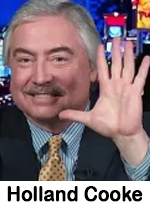 Take a day off. You get one free this year.
Take a day off. You get one free this year.



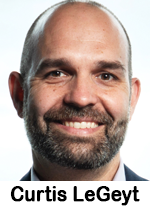 can advance their mission and enable them to better-serve communities with quicker alerts and more local news, he shared broadcasters’ concerns about AI without appropriate guardrails in place. He presented three primary concerns; 1) that the use of broadcasters’ news content in AI models, without authorization, diminishes their audience trust and their reinvestment in local news; 2) the use of AI to doctor, manipulate or misappropriate the likeness of trusted radio or television personalities risks spreading misinformation or even perpetrating fraud; and 3) the rising prevalence of deepfakes make it increasingly burdensome for both newsrooms and users to identify and distinguish legitimate, copyrighted broadcast content, from the unvetted and potentially inaccurate content being generated by AI.
can advance their mission and enable them to better-serve communities with quicker alerts and more local news, he shared broadcasters’ concerns about AI without appropriate guardrails in place. He presented three primary concerns; 1) that the use of broadcasters’ news content in AI models, without authorization, diminishes their audience trust and their reinvestment in local news; 2) the use of AI to doctor, manipulate or misappropriate the likeness of trusted radio or television personalities risks spreading misinformation or even perpetrating fraud; and 3) the rising prevalence of deepfakes make it increasingly burdensome for both newsrooms and users to identify and distinguish legitimate, copyrighted broadcast content, from the unvetted and potentially inaccurate content being generated by AI.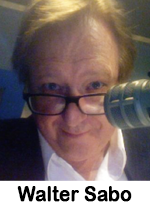 Research shows that readers to trade publications like articles with five bullet points. Here are my five bullet points for 2024. If these were to be deployed, you could be thriving by the end of the year. These actions would increase sales and audience share.
Research shows that readers to trade publications like articles with five bullet points. Here are my five bullet points for 2024. If these were to be deployed, you could be thriving by the end of the year. These actions would increase sales and audience share.
 It was one of those indelible moments in sports history: The 1958 NFL Championship, played on December 28, 1958 at Yankee Stadium in New York. The Baltimore Colts defeated the New York Giants 23-17 in sudden death overtime. 65 years later, the events of that Sunday afternoon still resonate throughout pro sports and sports media.
It was one of those indelible moments in sports history: The 1958 NFL Championship, played on December 28, 1958 at Yankee Stadium in New York. The Baltimore Colts defeated the New York Giants 23-17 in sudden death overtime. 65 years later, the events of that Sunday afternoon still resonate throughout pro sports and sports media.
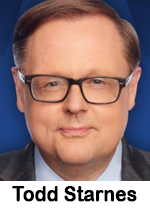 an hour of the radio program “The Todd Starnes Show.” Additionally, Todd Starnes is hosting an exclusive, one-hour television program on Newsmax 2. Starnes says, “I’m honored to be a part of the great lineup at Newsmax. And it’s exciting to see the synergy between radio and television.” Next month, Starnes’ radio program launches in Houston on KYST-AM “920 Patriot Talk.”
an hour of the radio program “The Todd Starnes Show.” Additionally, Todd Starnes is hosting an exclusive, one-hour television program on Newsmax 2. Starnes says, “I’m honored to be a part of the great lineup at Newsmax. And it’s exciting to see the synergy between radio and television.” Next month, Starnes’ radio program launches in Houston on KYST-AM “920 Patriot Talk.”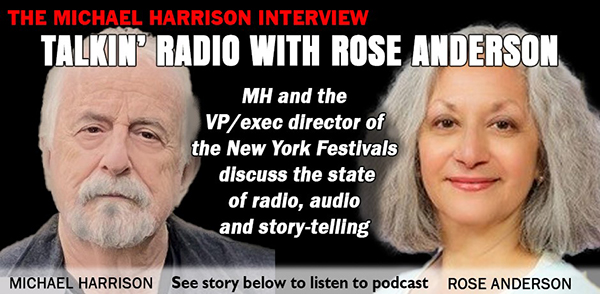
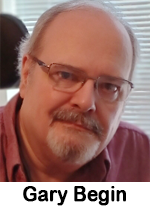 You know the routine.
You know the routine.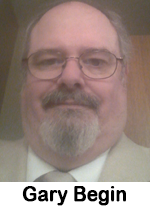 Broadcasting executives spend millions building their radio station’s brand in the marketplace. But is it being spent in the right place?
Broadcasting executives spend millions building their radio station’s brand in the marketplace. But is it being spent in the right place?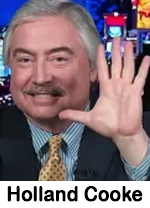 In
In 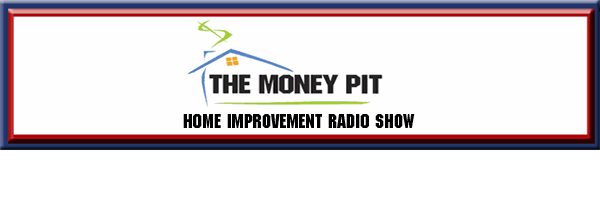
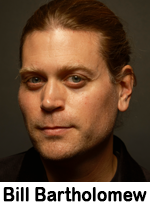 Providence-based talk host, podcaster, journalist and musician Bill Bartholomew says, “In a world where social media influencers and podcasters supply information to millions of young consumers, news/talk radio should be able to effectively compete for the ears of younger generations in a comparable, if not expanded way.” In a piece written for TALKERS magazine. Bartholomew says, “Unlike many digital-first content producers, radio retains a unique quality: authority. By virtue of editorial standards, FCC regulation and brand – things that social media and podcasts often lack – radio has the unique ability to deliver credible, vetted, nuanced and universally trustworthy content that can instantaneously adapt to meet the needs of the moment. This is true in everything from natural disasters to rapidly evolving breaking news stories, providing a channel for immediate, reactionary insight and analysis.” To that end, he suggests four steps news/talk stations should pursue.
Providence-based talk host, podcaster, journalist and musician Bill Bartholomew says, “In a world where social media influencers and podcasters supply information to millions of young consumers, news/talk radio should be able to effectively compete for the ears of younger generations in a comparable, if not expanded way.” In a piece written for TALKERS magazine. Bartholomew says, “Unlike many digital-first content producers, radio retains a unique quality: authority. By virtue of editorial standards, FCC regulation and brand – things that social media and podcasts often lack – radio has the unique ability to deliver credible, vetted, nuanced and universally trustworthy content that can instantaneously adapt to meet the needs of the moment. This is true in everything from natural disasters to rapidly evolving breaking news stories, providing a channel for immediate, reactionary insight and analysis.” To that end, he suggests four steps news/talk stations should pursue. 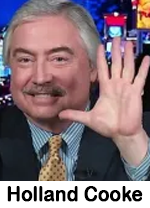 “If you think radio has problems,” consultant Holland Cooke says, “Netflix et al are to television stations what Pandora et al are to music stations. So local news is TV stations’ silver bullet. And – like radio – their need to promote off-air exceeds their promotion budget.” In this week’s column, he outlines tactics for “partnering with a fellow broadcaster who’s also challenged.”
“If you think radio has problems,” consultant Holland Cooke says, “Netflix et al are to television stations what Pandora et al are to music stations. So local news is TV stations’ silver bullet. And – like radio – their need to promote off-air exceeds their promotion budget.” In this week’s column, he outlines tactics for “partnering with a fellow broadcaster who’s also challenged.” 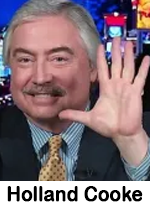 I am always impressed when I see-and-hear radio and TV stations swapping product.
I am always impressed when I see-and-hear radio and TV stations swapping product.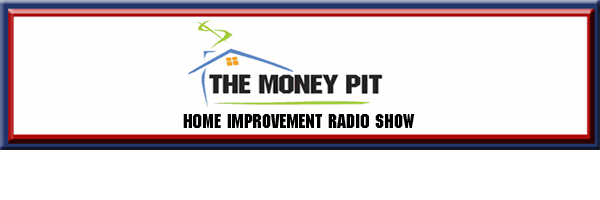
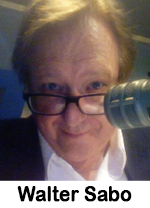 In May 2007, I was enjoying the brand-new app called YouTube. Still independently owned, still relatively unknown. Some of the videos pulled millions of viewers, more viewers than enjoyed by ESPN or any cable network. More interesting, the videos with high counts were not made by NBC or ESPN or any traditional video source. High view count videos were being made by people with no experience in traditional media, they were experimenters producing in their basements and bedrooms.
In May 2007, I was enjoying the brand-new app called YouTube. Still independently owned, still relatively unknown. Some of the videos pulled millions of viewers, more viewers than enjoyed by ESPN or any cable network. More interesting, the videos with high counts were not made by NBC or ESPN or any traditional video source. High view count videos were being made by people with no experience in traditional media, they were experimenters producing in their basements and bedrooms.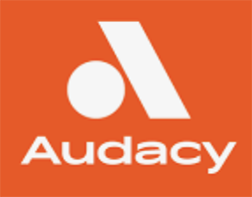 -platform audio with media plans that utilize radio, digital audio and podcasts, working together to reach audiences with unprecedented precision and drive quantifiable outcomes for their brands.” Some of the findings within the guide include: 1) Audio advertising works harder – driving more than two times the attention of TV and social media at more desirable CPMs; 2) Radio and digital audio are stronger together. A multi-platform audio strategy is so powerful that advertisers see 1.5 times the return on ad spend compared to digital-only campaigns; 3) Advertisers are leaving upwards of $6 billion in revenue on the table by not including total audio – a balanced mix of traditional broadcast radio and digital audio – in their media mix, according to a study conducted by Audacy and Neustar. The report also offers actionable tips for producing effective ads under the section titled, “5 Ways the Best Audio Ads Crush the Status Quo.” Here, Audacy says, “Advertising on the #1 reach media — Audio — will get you the most ears. But to keep them, your creative can’t just be good — it needs to be really freaking great.”
-platform audio with media plans that utilize radio, digital audio and podcasts, working together to reach audiences with unprecedented precision and drive quantifiable outcomes for their brands.” Some of the findings within the guide include: 1) Audio advertising works harder – driving more than two times the attention of TV and social media at more desirable CPMs; 2) Radio and digital audio are stronger together. A multi-platform audio strategy is so powerful that advertisers see 1.5 times the return on ad spend compared to digital-only campaigns; 3) Advertisers are leaving upwards of $6 billion in revenue on the table by not including total audio – a balanced mix of traditional broadcast radio and digital audio – in their media mix, according to a study conducted by Audacy and Neustar. The report also offers actionable tips for producing effective ads under the section titled, “5 Ways the Best Audio Ads Crush the Status Quo.” Here, Audacy says, “Advertising on the #1 reach media — Audio — will get you the most ears. But to keep them, your creative can’t just be good — it needs to be really freaking great.” 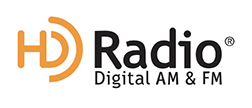 own problems by increasing overall interference on the band, leading many stations to abandon it.” But all-digital AM is a much better signal and as more and more infotainment systems in new cars are HD compatible, more listeners are likely. Outfitting AM stations with digital transmitters is not inexpensive, even though they use far less electricity than an analog AM transmitter. And in the United Kingdom where digital audio broadcasting (DAB) launched more than 10 years ago, most commercial radio stations still broadcast an analog signal as well. Even though about 60% of listening in the UK is to DAB signals, Ofcom recently agreed to renew analog licenses through 2032 because many Britons still listen to analog on their old radios.
own problems by increasing overall interference on the band, leading many stations to abandon it.” But all-digital AM is a much better signal and as more and more infotainment systems in new cars are HD compatible, more listeners are likely. Outfitting AM stations with digital transmitters is not inexpensive, even though they use far less electricity than an analog AM transmitter. And in the United Kingdom where digital audio broadcasting (DAB) launched more than 10 years ago, most commercial radio stations still broadcast an analog signal as well. Even though about 60% of listening in the UK is to DAB signals, Ofcom recently agreed to renew analog licenses through 2032 because many Britons still listen to analog on their old radios.  As your friends get fired and on-air hosts are replaced with WideOrbit and Profitable Software, the mournful refrain is to unfairly blame consolidation. Consolidation has, in fact, made the medium financially viable and brought hundreds of individual stations from a river of red ink to the glow of black ink. Prior to consolidation, over half the radio stations in the U.S. lost money – year after year. Not a secret stat, those numbers were revealed annually by the NAB.
As your friends get fired and on-air hosts are replaced with WideOrbit and Profitable Software, the mournful refrain is to unfairly blame consolidation. Consolidation has, in fact, made the medium financially viable and brought hundreds of individual stations from a river of red ink to the glow of black ink. Prior to consolidation, over half the radio stations in the U.S. lost money – year after year. Not a secret stat, those numbers were revealed annually by the NAB.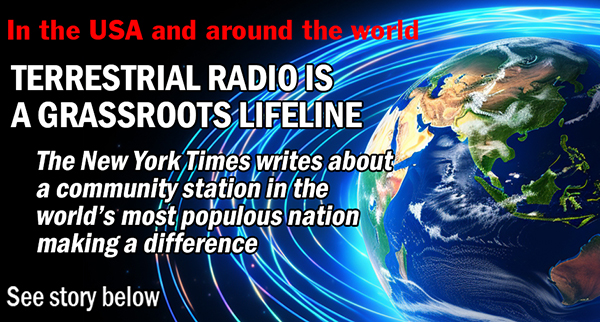
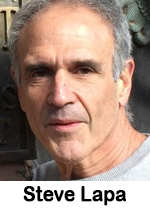 Attention news/talk radio sellers! Get ready to meet your new best friend… and it is not who you think it is.
Attention news/talk radio sellers! Get ready to meet your new best friend… and it is not who you think it is.